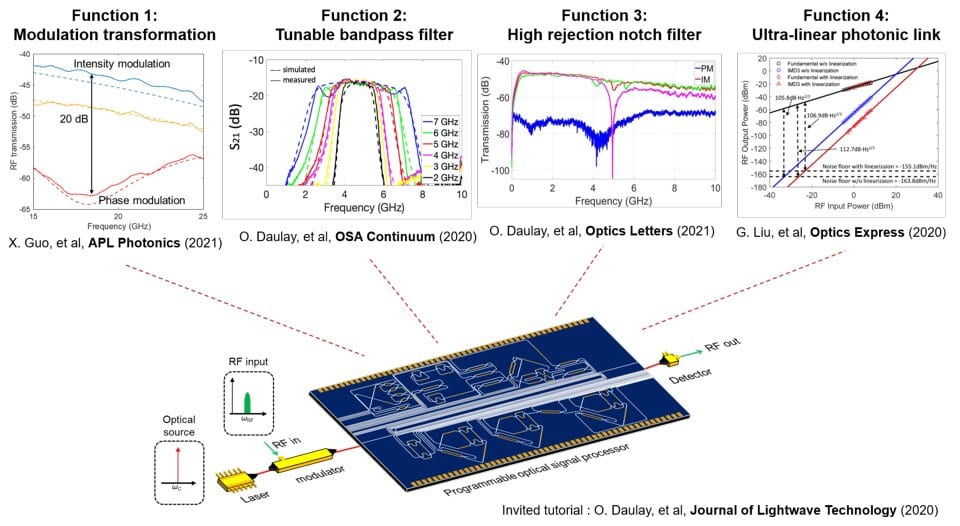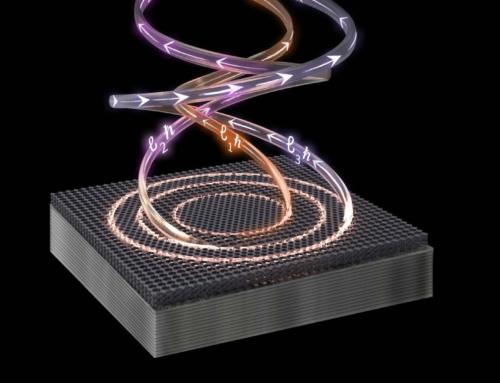Shaping radio signals using photonics technologies seems like a detour. But the versatility of current programmable silicon photonic circuits can open new possibilities according to researchers of the University of Twente. They have presented their microwave photonic spectral shaper inAPL Photonics.
For processing signals in the radio frequency (RF) domain, for example, in 5G communications, future 6G or radar, sharp filtering and other high-precision operations on the high frequency radio signals are important. Light molded in integrated photonic circuits can offer signal processing with high bandwidth and unmatched flexibility thanks to the programmability of integrated photonics. But still, the stage where radio signals are converted to lightwaves, known as optical modulation, is cumbersome. The spectral shaper presented by the researchers solves this bottleneck thanks to a number of flexible photonic components.
Programmable photonics
In order to shape the information signal, first the light components are taken apart. The separate parts, like the radio side bands around the optical frequency, can then be processed separately. When all photonic processing is done and the desired spectral shape is created, light is recombined and converted back into a radio frequency signal. All of these processes were done in the silicon chip using ring-shaped resonators and filters that can be electronically programmed. The chip also includes a high-speed detector for converting the light back to radiowaves.
“This new spectral shaper is the basis for a whole range of complex operations that can be done on RF signals using programmable photonics,” David Marpaung says. He is a professor at the Nonlinear Nanophotonics group at the University of Twente.
The chip that the researchers from Twente, Sydney and Ghent demonstrate in this paper was made using silicon photonics. Next-generation chips made in silicon nitride—the main photonic technology at UT’s MESA+ NanoLab—are currently under tests in Marpaung’s lab.
The paper, “Versatile silicon microwave photonic spectral shaper,” is published in APL Photonics.




